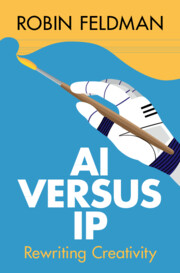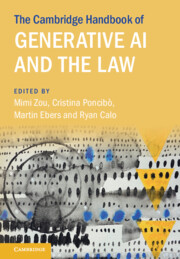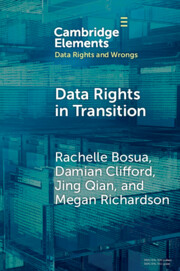Refine search
Actions for selected content:
2860 results in Computing and Society
Chapter 1 - Mathematics teaching and learning in lower secondary schooling (Years 7 to 10)
-
- Book:
- Teaching Key Concepts in the Australian Mathematics Curriculum Years 7 to 10
- Published online:
- 13 August 2025
- Print publication:
- 21 August 2025, pp 1-19
-
- Chapter
- Export citation
Contents
-
- Book:
- Teaching Key Concepts in the Australian Mathematics Curriculum Years 7 to 10
- Published online:
- 13 August 2025
- Print publication:
- 21 August 2025, pp v-vii
-
- Chapter
- Export citation
Acknowledgements
-
- Book:
- Teaching Key Concepts in the Australian Mathematics Curriculum Years 7 to 10
- Published online:
- 13 August 2025
- Print publication:
- 21 August 2025, pp xi-xii
-
- Chapter
- Export citation
Index
-
- Book:
- Teaching Key Concepts in the Australian Mathematics Curriculum Years 7 to 10
- Published online:
- 13 August 2025
- Print publication:
- 21 August 2025, pp 317-334
-
- Chapter
- Export citation
Chapter 8 - Statistics
-
- Book:
- Teaching Key Concepts in the Australian Mathematics Curriculum Years 7 to 10
- Published online:
- 13 August 2025
- Print publication:
- 21 August 2025, pp 223-261
-
- Chapter
- Export citation
Preface
-
- Book:
- Teaching Key Concepts in the Australian Mathematics Curriculum Years 7 to 10
- Published online:
- 13 August 2025
- Print publication:
- 21 August 2025, pp ix-x
-
- Chapter
- Export citation
Chapter 3 - The Australian Curriculum: Mathematics
-
- Book:
- Teaching Key Concepts in the Australian Mathematics Curriculum Years 7 to 10
- Published online:
- 13 August 2025
- Print publication:
- 21 August 2025, pp 43-62
-
- Chapter
- Export citation
Chapter 7 - Space
-
- Book:
- Teaching Key Concepts in the Australian Mathematics Curriculum Years 7 to 10
- Published online:
- 13 August 2025
- Print publication:
- 21 August 2025, pp 192-222
-
- Chapter
- Export citation
Chapter 4 - Number
-
- Book:
- Teaching Key Concepts in the Australian Mathematics Curriculum Years 7 to 10
- Published online:
- 13 August 2025
- Print publication:
- 21 August 2025, pp 63-111
-
- Chapter
- Export citation
Chapter 9 - Probability
-
- Book:
- Teaching Key Concepts in the Australian Mathematics Curriculum Years 7 to 10
- Published online:
- 13 August 2025
- Print publication:
- 21 August 2025, pp 262-291
-
- Chapter
- Export citation
Chapter 5 - Algebra
-
- Book:
- Teaching Key Concepts in the Australian Mathematics Curriculum Years 7 to 10
- Published online:
- 13 August 2025
- Print publication:
- 21 August 2025, pp 112-157
-
- Chapter
- Export citation
About the authors
-
- Book:
- Teaching Key Concepts in the Australian Mathematics Curriculum Years 7 to 10
- Published online:
- 13 August 2025
- Print publication:
- 21 August 2025, pp viii-viii
-
- Chapter
- Export citation
Chapter 6 - Measurement
-
- Book:
- Teaching Key Concepts in the Australian Mathematics Curriculum Years 7 to 10
- Published online:
- 13 August 2025
- Print publication:
- 21 August 2025, pp 158-191
-
- Chapter
- Export citation
Copyright page
-
- Book:
- Teaching Key Concepts in the Australian Mathematics Curriculum Years 7 to 10
- Published online:
- 13 August 2025
- Print publication:
- 21 August 2025, pp iv-iv
-
- Chapter
- Export citation
Chapter 2 - The principles of mathematics education
-
- Book:
- Teaching Key Concepts in the Australian Mathematics Curriculum Years 7 to 10
- Published online:
- 13 August 2025
- Print publication:
- 21 August 2025, pp 20-42
-
- Chapter
- Export citation

Teaching Key Concepts in the Australian Mathematics Curriculum Years 7 to 10
-
- Published online:
- 13 August 2025
- Print publication:
- 21 August 2025
-
- Textbook
- Export citation

AI versus IP
- Rewriting Creativity
-
- Published online:
- 09 August 2025
- Print publication:
- 28 August 2025

The Cambridge Handbook of Generative AI and the Law
-
- Published online:
- 08 August 2025
- Print publication:
- 07 August 2025

Data Rights in Transition
-
- Published online:
- 08 August 2025
- Print publication:
- 04 September 2025
-
- Element
- Export citation
Tables
-
- Book:
- The Cambridge Handbook of Generative AI and the Law
- Published online:
- 08 August 2025
- Print publication:
- 07 August 2025, pp xi-xii
-
- Chapter
- Export citation
